Recent Updates
09/11/2025 12:00 AM
Competition: Win two nights in Paris courtesy of Renault
09/10/2025 12:00 PM
Munich Motor Show, 94mpg Audi A2 and saving the car industry
09/10/2025 12:00 PM
BMW 1 Series
09/10/2025 12:00 PM
MG 3 suffers 'critical safety failure' in Euro NCAP crash test
09/10/2025 12:00 AM
Skoda seven-seat EV due in 2026 as brand's new flagship
09/10/2025 12:00 AM
Ferrari Testarossa returns as 1035bhp SF90 replacement
09/10/2025 12:00 AM
RML GT Hypercar driven: Is this 907bhp monster the ultimate 911?
09/09/2025 12:00 AM
2026 Renault Megane to be reinvented with "hot hatch" look
09/08/2025 12:00 PM
New 2026 Volkswagen ID 4 to be "big brother" of new ID Cross
09/08/2025 12:00 PM
BMW to launch 40-plus new cars by 2028 - all with their own look
EV, Hybrid, Hydrogen, Solar & more 21st century mobility!
 Legendary name resurrected for new supercar, which is most powerful production Ferrari yet
Legendary name resurrected for new supercar, which is most powerful production Ferrari yet
Ferrari has reprised a storied name with the new 849 Testarossa, which replaces the SF90 Stradale and becomes the company's most powerful series-production model.
The new supercar makes 1035bhp - 49bhp more than its predecessor - and will reach 62mph in 2.35sec on its way to ‘more than’ 205mph.
Deliveries of the coupé are due to start next spring, with the drop-top Spider variant arriving in the autumn.
Along with its extra power, innovations concerning the car's aerodynamics and chassis electronics mean the 849 Testarossa can lap Ferrari’s Fiorano test track in 1min 17.5sec - 1.2sec quicker than the SF90 Stradale and just 0.2sec shy of the limited-series SF90 XX Stradale.Â
The lap time was achieved with the help of the Assetto Fiorano pack, which will be offered from the start of sales and shaves 30kg off the car’s 1570kg dry weight, as well as bringing track-focused upgrades to the suspension, tyres and body.Â
That dry weight figure is unchanged from the SF90 Stradale, thanks to incremental weight-saving measures throughout the car that mitigate the 20kg or so that the new body and driveline modifications have added. The spider weighs 90kg more.Â
In its styling, the mid-engined 849 Testarossa is a radical departure from its predecessor. The leading edge adopts the striking, full-width graphic recently seen on the F80 and 12Cilindri, while the rear of the car features two spectacular spoilers intended to evoke Ferrari’s sports prototype racers of the early 1970s.
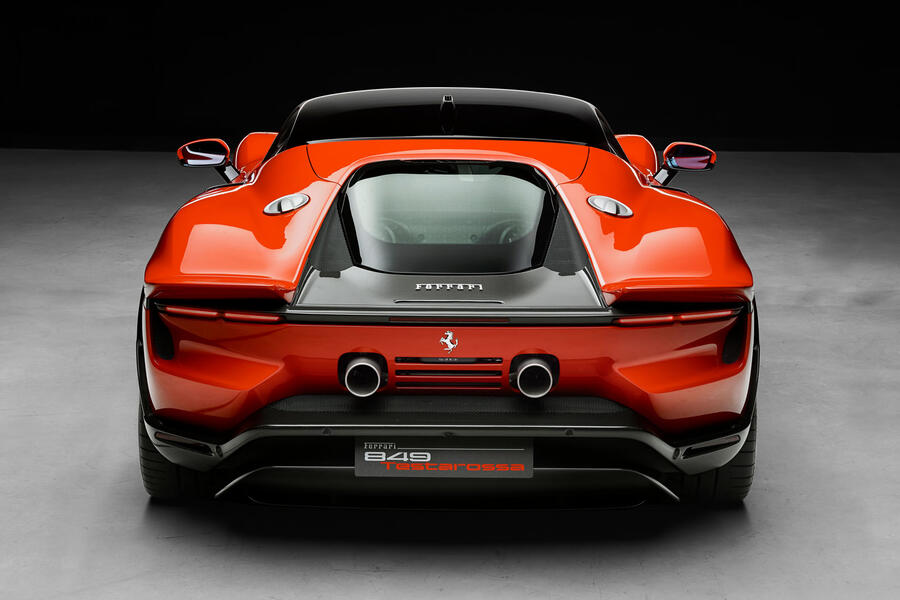
Chief designer Flavio Manzoni said at the reveal event in Milan that "it is our duty as designers to create something new", despite the car’s effective status as a facelift and its mechanical similarity to the SF90 Stradale.Â
He spoke of the new car's "strong geometric forms and sharp geometric cuts" but said the design intentionally takes no inspiration from the legendary 512 Testarossa of 1991, despite the name.Â
The new bodywork is also notable for its dramatic side intake vents, which are integrated into the doors and feed enormous intercoolers taken from the F80. These aluminium panels took two years to put into production, such was the difficulty of pressing the shape.Â
Cooling was one of the challenges of the project. As well as those intercoolers having a fifth more surface area than those of the SF90 Stradale, the front intakes are also significantly enlarged. There are also new oil coolers.
The new body makes the 849 Testarossa 8mm longer than the SF90 Stradale. It also helps the car make 25% more downforce at 150mph, although much of this improvement is down to the powerful underbody outwash and the new diffuser.Â
Mechanically, the car is largely unchanged from the plug-in hybrid SF90 it supersedes. Under the body is the same driveline, with a 3990cc twin-turbocharged V8 operating alongside two independently acting electric motors on the front axle and another between the engine and the eight-speed dual-clutch automatic gearbox. Â
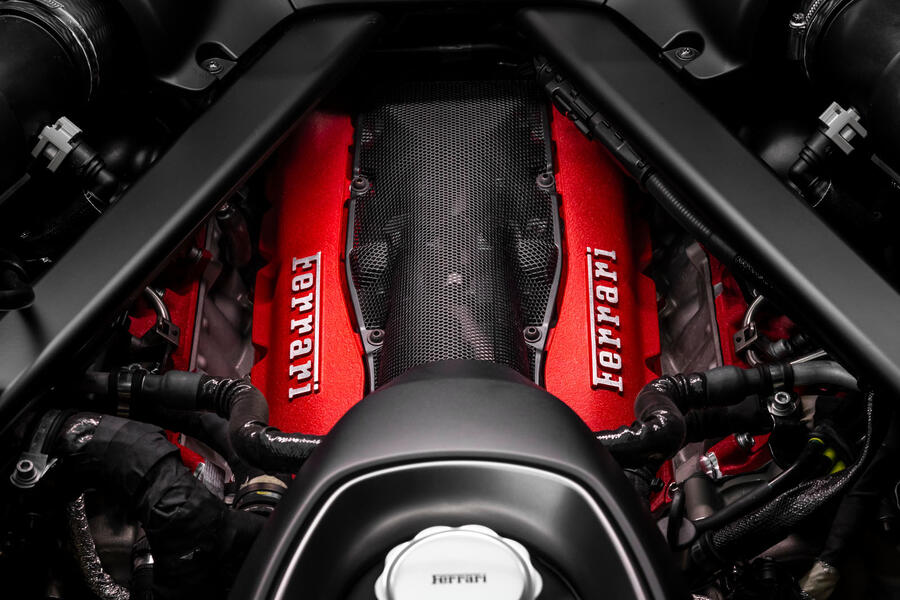
That the system now makes 49bhp more than before is thanks in part to larger-diameter fixed-geometry turbochargers with low-friction bearings, derived from those used in the F80. There's also an 'innovative' heat shield for the turbine casing that takes learnings from the 296 GT3 racing in the World Endurance Championship.
Further revisions have been made to the cylinder heads, exhaust manifolds, intake plenums and valvetrain, as well as the fuel rail. The lighter crankshaft is new too and titanium screws have been used throughout.
The high-exiting exhaust tract is also 10% longer than before and has larger ducts in an effort to improve the musicality of the 'Tipo F154' engine. Further helping in that endeavour is that the redline has risen by 300rpm to 8300rpm.
Alone this engine musters 818bhp and 621lbft. The combined output of the electric motors is limited to 217bhp at any given moment, because the 7.5kWh battery, which is tucked up against the rear bulkhead and allows for around 18 miles range in the car's EV mode, doesn't allow greater draw.Â
Chief development officer Gianmaria Fulgenzi said the potential to increase electric power by using a more capable battery exists, but for now his team is happy with the car's overall balance of its two power sources.
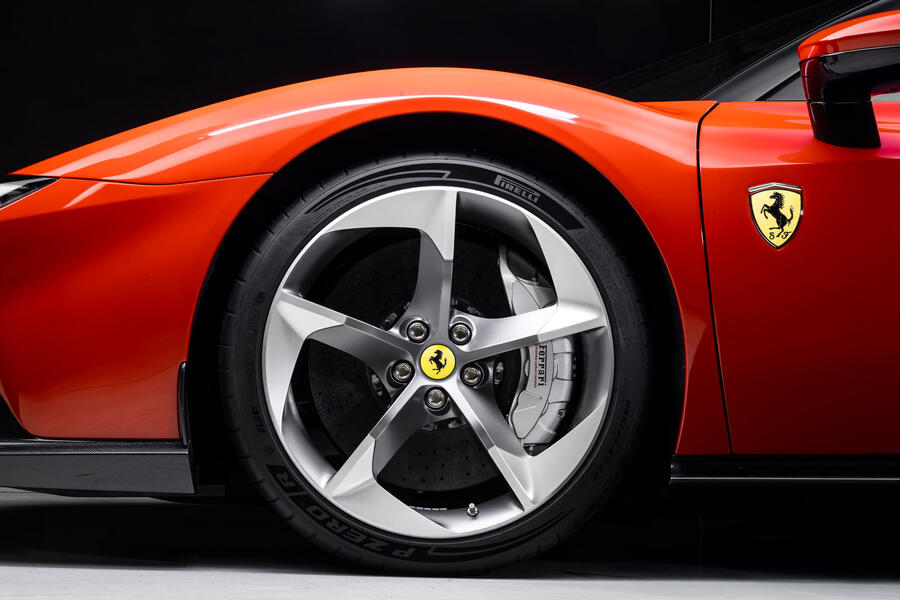
Elsewhere, the brake package has been upgraded from the SF90 Stradale, with larger carbon-ceramic discs and redesigned calipers from Brembo. The regenerative braking calibration has also been revised to give more feedback and consistency as the system blends retardation from the electric motors with the physical brakes themselves. The 849 Testarossa is claimed to haul up one metre sooner from 62mph than its forebear.
The gearbox has also been substantially improved, said Fulgenzi, building on the software found in the 296 GTB for faster shifts both up and down the ‘box.
Mated to the rear electric motor, it drives through an electronically controlled limited-slip differential, the behaviour of which is partly informed by Ferrari’s Slip Slide Control system, now at version 9.0.
However, the big development in terms of software is the inclusion of the Ferrari Integrated Vehicle Estimator (Five) introduced on the F80.
This system, currently reserved for cars only with four-figure power outputs, is able to calculate true speed and vehicle yaw with a very high degree of accuracy. Along with data from sensors dotted about the car, Five creates a ‘digital twin’ of the vehicle’s dynamics in real time and uses this as the basis of a model that predicts what will happen next.Â
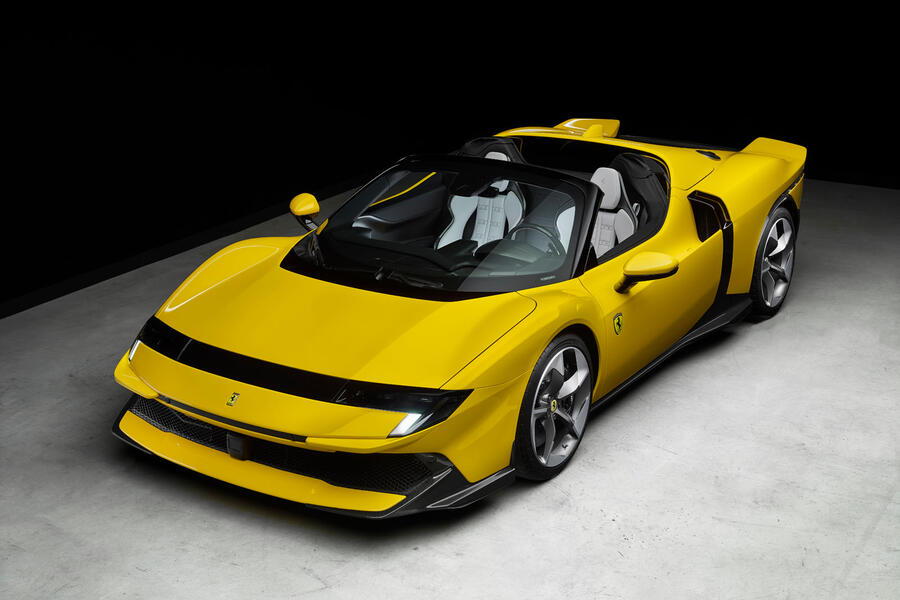
This prediction determines the behaviour of the ABS, stability control, traction control and torque-vectoring functions to maximise speed and stability.Â
The gathering of data, the generation of the twin model, the subsequent prediction and finally the actioning of the 849 Testarossa’s various chassis systems unfolds in a timeframe of single-digit milliseconds. The effect from the driver’s perspective is a reduction in steering inputs - that is, enhanced economy of movement - and quicker lap times.
UK pricing hasn't yet been confirmed, but in Europe the 849 Testarossa will start at €460,000 (£398,260) for the coupé and €500,000 (£432,890) for the spider, with the Assetto Fiorano package adding a further €52,500 (£45,450).
It marks a significant increase over the pricing of the SF90 Stradale when it was launched in 2019Â but puts the Ferrari on par with its closest rival, the Lamborghini Revuelto.
Will the XX return?
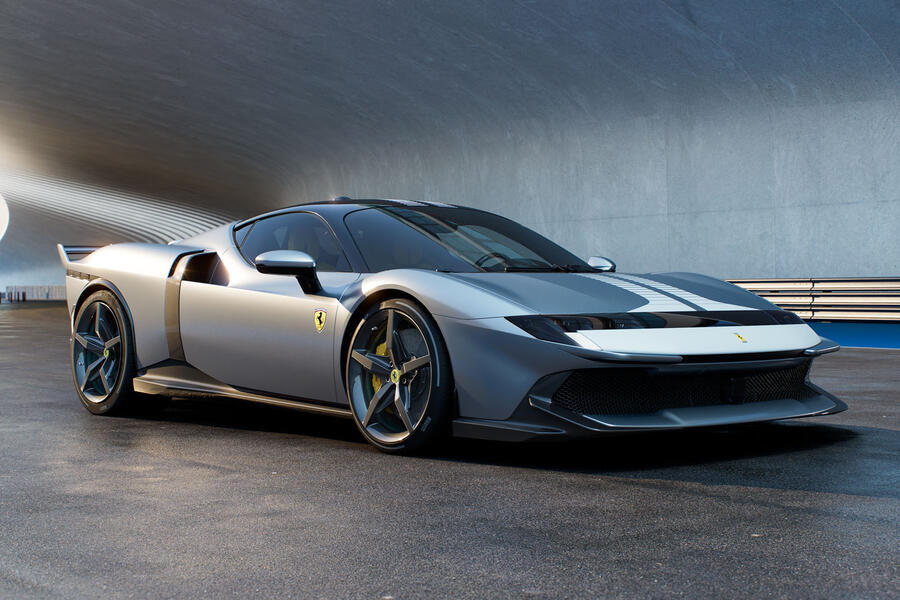
It’s unknown whether Ferrari will make a red-hot ‘XX’ version of the 849 Testarossa, as it did with the SF90 Stradale, but anybody looking to scratch the trackday itch with the regular car should be well-served by the Assetto Fiorano package, pictured above.
It is by far the single most expensive option available, at €52,500, but it brings several exclusive options, not least lightweight ‘tubular’ bucket seats that together save 18kg versus the standard chairs. Carbonfibre wheels then account for much of the remainder of the pack’s total 30kg weight-saving.
The power output is unchanged but single-rate Multimatic dampers (replacing the standard car’s semi-active Magneride dampers) enhance wheel control and trim roll, helping the driver put down more of that 1049bhp total, more of the time. In our experience these dampers make for pricky company on the road but are sensationally effective on track.
The standard car’s twin spoilers are then replaced by wing-boxes similar to those originally seen on the Enzo FXX in 2005, and there are larger flicks in the nose and two extra vortex generators for the front underbody. Michelin Pilot Sport Cup 2 tyres complete the package.
